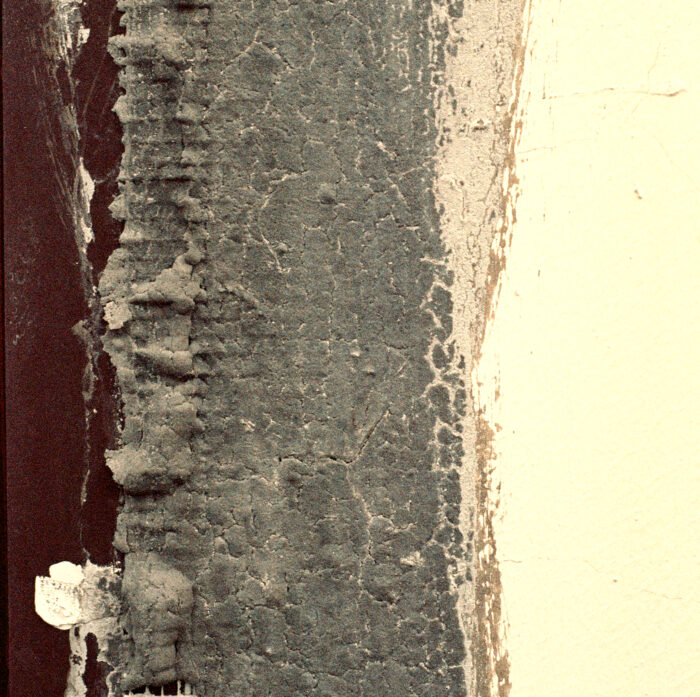
The Writing on the Wall
by Hattie Myers
“The human voice has a disarming quality—
(we are not single, we are one).”
— Virginia Woolf, The Waves
Each of the writers in ROOM 6.25 has captured, in their own way, something of this extraordinary moment we are all living through. This is not easy. In his essay Why I Write, Thomas Ogden explains why. “Part of the difficulty of writing well lies in the fact that writing any sort of analytic essay, literary essay, poetry, fiction is autobiographical,” Ogden writes; “I must find a way of capturing a situation in my own way, a way that bears my own mark.” This unique issue of ROOM bears the mark of multitudes and holds the scars of generations.
In It Doesn’t Start with Prisons: A Psychotherapist’s Warning About Silence, Kissu Taffere writes, “Each act of political violence ripples through generations, leaving traces in both flesh and memory.” Born during Ethiopia’s Derg “Red Terror,” Taffere has “seen blood on people before it’s dried, seen evidence of torture laid out for documentation.” She is imploring us to see how “institutional erosion often starts with these small, seemingly insignificant acts of enforced conformity.” She knows. She has lived it.
Iris Fodor has also lived it. Red Scare at City College describes how, despite fears for herself and the real danger to her family, as vice president of the City College student council, Fodor helped mobilize support for a besieged faculty and prevent the administration from turning in lists of students to the government. Like Taffere, Fodor is writing to warn, “We have been here before.”
And we have. Centered at the very heart of this issue lies Richard Grose’s seminal work entitled We Have Been Here Before: Reading the Declaration of Independence in 2025. It could not be clearer.
“The patterns were set long ago, and even as we try to do better, we continue to benefit at others’ expense,” Elizabeth Cutter Evert reminds us in American Resistance: A Mayflower Meditation. Both Evert’s essay and Thomas Casagrande’s Hard Feelings describe how the ancestral legacies of perpetuating colonialism and fascism have shaped their lives. As the descendant of Puritans in Boston and slaveholders in the South, Evert has “been haunted since childhood by concerns of being a “bystander.” As the son of a Nazi SS officer, Casagrande tells us, “It increasingly embarrassed me that I could not say how my father was involved in the crimes of National Socialism. This lack of knowledge seemed to me like a silent complicity.”
For both Evert and Casagrande, restoring something in themselves also involves reshaping something in the world. “While members of the dominant class are far from impotent, the chronic failure to act on another’s pain can lead to pathways of derealization and paralysis,” writes Evert. “For most Germans,” Casagrande tells us, “coming to terms with the Nazi era stopped at the family threshold. It was never about feeling the suffering of the victims…. Today it seems to me that my public confrontation with my father was necessary for me to be able to write about Israel and Palestine.”
All the authors in ROOM 6.25 are seeing, are trying to make sense of, are imploring us to read the writing on the wall. Or, as in the case of Tamara Martin Causey in Bike Week, to read the writing plastered on T-shirts, bumper stickers, and posters: “The realization of what I was seeing struck me with such a force that I had to stand frozen in the middle of a sea of bodies and go inward to try to reclaim my composure, emotions, and balance,” Causey writes; “… the rage has exploded through the surface.”
Timothy Snyder recognizes something even more insidious exploding through the surface, and it’s not plastered on bumper stickers. “It seems to me,” he writes in Fomenting Anti-semitism, “that in all of the chaos of this Trump administration, their most consistent policy thus far, maybe even their single most consistent policy, has been to foment anti-Semitism…. If we allow the government to claim that it is fighting antisemitism when it is in fact fomenting antisemitism, then we lose the concept of antisemitism.”
Whether in official policies, in ad hominem attacks, or written on T-shirts, when the meaning of words is hollowed out or made to disappear, words can become weaponized and wielded for other purposes. “If one is interested in combating antisemitism, one must preserve the concept and one must preserve the word,” writes Snyder.
“What does language communicate?” asks Walter Benjamin. Just this, he answers: “It communicates the mental being corresponding to it.” The authors in ROOM 6.25 show us that we must appreciate the variousness of “mental beings” behind all the “writings on the wall” if we are to maintain our connection to reality, if we are to have any hope of transforming the reality we are in to a better one for future generations.
But what happens when the “mental being” behind language is not, in fact, a mental being?
In The Seen and the Unseen: AI’s Disquieting Impact, Xiaomeng Qiao suggests that this is one of those questions “reflecting the collective anxieties of our era.” While AI has illuminated ways for Qiao to understand things about himself that he was unaware of, he writes that “(t)he AI systems I use were trained on massive datasets reflecting existing cultural biases, meaning my ‘unique’ creations are inevitably shaped by collective patterns.” The responsibility of judgment, which is necessary if they are to maintain their connection to reality, remains in his hands, not in AI.
The uniqueness of each human being has universal significance. No one but Douglas White, growing up in Kinston, North Carolina, as part of the last generation of Black Americans born under the Jim Crow laws in the American South, could have written The Wallet. Through a unique childhood incident that spilled out decades later, White found both recognition and a way to survive in a world that had no place for him. Jay Wiggin’s story Matt, on the other hand, tells the tale of a young Black man who didn’t survive. As Wiggens writes, “What kind of world was (Matt) offered? What place had been made for him?”
“We allow the future to come at us in tiny doses. Do we want to follow the news? Can we hold on to our internal compasses? Will they spin out of control? Is it even possible to set a course?” Alexandra Woods’ sweepingly lyrical elegy Winter into Spring closes this issue of ROOM. “I may not live to see us regain the changes we fought for. It is humbling.” Her essay continues, “When the cold afternoon sun lights up the floors, we sweep up glinting sand in a desultory way. No need to have things perfectly clean.”
Our solidarity gives hope.
***
We are delighted that ROOM’s second edition of We Are The Light contains six new contributions from Afghan women who are surviving in darkness. And resonating with them, we are honored to showcase two community projects: Zan Times, an Afghan women–led media platform, and Voices Unveiled, an online program of education, mental health support, leadership development, and community building for Afghan women.
We also want to express our appreciation to you, our loyal readers who continue to make our work possible. Without your financial support, without your connection to ROOM’s community mission, none of us would be here.
-
Hattie Myers PhD, Editor in Chief: is a member of IPA, ApsA, and a Training and Supervising Analyst at IPTAR.
-
Email: hattie@analytic-room.com
ROOM is entirely dependent upon reader support. Please consider helping ROOM today with a tax-deductible donation. Any amount is deeply appreciated. |





